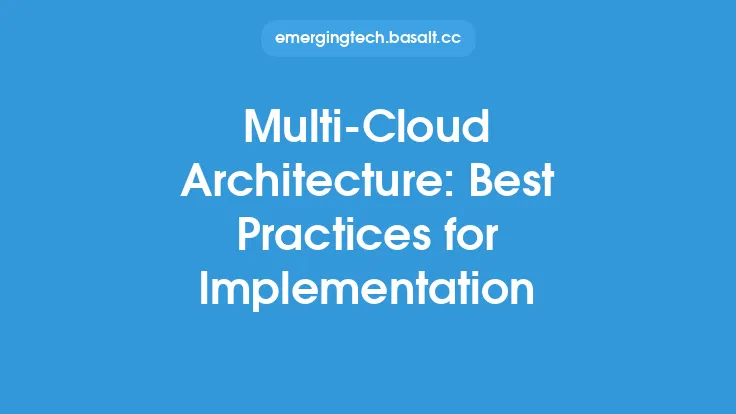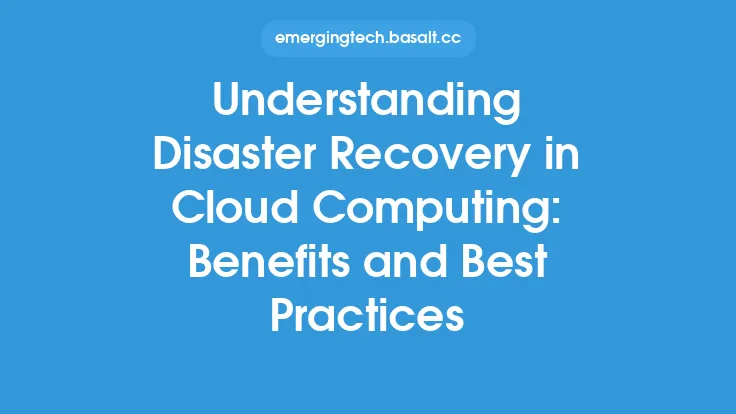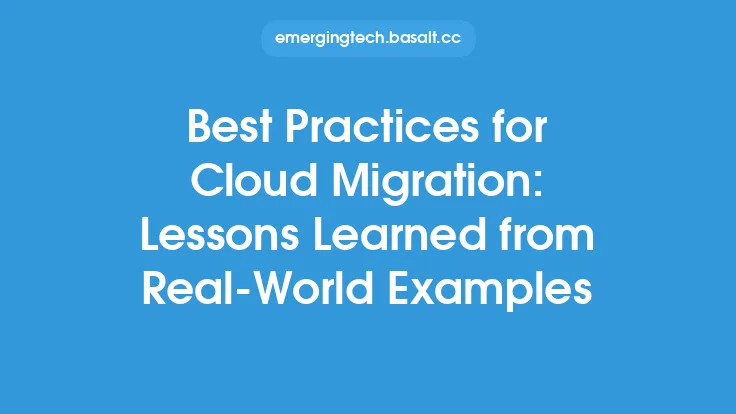Implementing a hybrid cloud environment can be a complex and daunting task, requiring careful planning, execution, and management. As organizations increasingly adopt hybrid cloud strategies to leverage the benefits of both public and private cloud infrastructure, it's essential to follow best practices to ensure a successful implementation. In this article, we'll delve into the key considerations and guidelines for implementing a hybrid cloud environment, focusing on the technical and operational aspects of this emerging technology.
Planning and Assessment
Before embarking on a hybrid cloud implementation, it's crucial to conduct a thorough assessment of your organization's current infrastructure, applications, and workloads. This involves evaluating your existing on-premises infrastructure, including servers, storage, and networking components, as well as your public cloud usage and costs. You should also identify the applications and workloads that are suitable for migration to the cloud, considering factors such as security, compliance, and performance requirements. A comprehensive planning and assessment phase will help you determine the optimal hybrid cloud architecture and deployment model for your organization.
Security and Compliance
Security and compliance are critical considerations in a hybrid cloud environment, where data and applications are distributed across multiple cloud providers and on-premises infrastructure. To ensure the security and integrity of your data, you should implement robust security controls, such as encryption, firewalls, and access controls, across all cloud environments. You should also ensure compliance with relevant regulations and standards, such as GDPR, HIPAA, and PCI-DSS, by implementing data governance policies and procedures. Additionally, you should consider implementing a cloud security gateway (CSG) to provide an additional layer of security and visibility across your hybrid cloud environment.
Network and Connectivity
A reliable and high-performance network infrastructure is essential for a hybrid cloud environment, where data and applications are accessed and shared across multiple cloud providers and on-premises infrastructure. You should ensure that your network infrastructure is designed to support the requirements of your hybrid cloud environment, including low latency, high bandwidth, and redundancy. You should also consider implementing a software-defined wide area network (SD-WAN) to provide a secure and optimized connection between your on-premises infrastructure and cloud providers. Furthermore, you should ensure that your network infrastructure is scalable and flexible to support the dynamic nature of cloud computing.
Management and Monitoring
Effective management and monitoring are critical to ensuring the performance, security, and compliance of a hybrid cloud environment. You should implement a comprehensive management and monitoring platform that provides visibility and control across all cloud environments, including on-premises infrastructure, public cloud providers, and private cloud infrastructure. This platform should provide real-time monitoring and analytics, as well as automation and orchestration capabilities, to ensure that your hybrid cloud environment is running optimally and securely. You should also consider implementing a cloud management platform (CMP) to provide a single pane of glass for managing and monitoring your hybrid cloud environment.
Application Migration and Deployment
Migrating applications to a hybrid cloud environment requires careful planning and execution to ensure minimal disruption to business operations. You should assess the suitability of each application for migration to the cloud, considering factors such as security, compliance, and performance requirements. You should also consider implementing a cloud-native architecture, which is designed to take advantage of cloud computing principles, such as scalability, elasticity, and on-demand resources. Additionally, you should consider using containerization and orchestration tools, such as Docker and Kubernetes, to simplify the deployment and management of applications in a hybrid cloud environment.
Cost Optimization and Governance
Cost optimization and governance are essential considerations in a hybrid cloud environment, where costs can quickly spiral out of control if not managed properly. You should implement a comprehensive cost management and governance framework that provides visibility and control over cloud costs, including usage, billing, and optimization. This framework should include tools and processes for monitoring and analyzing cloud usage, identifying areas for cost optimization, and implementing cost-saving measures, such as reserved instances and autoscaling. You should also consider implementing a cloud cost management platform (CCMP) to provide a single pane of glass for managing and optimizing cloud costs.
Training and Support
Finally, it's essential to ensure that your organization has the necessary skills and expertise to manage and support a hybrid cloud environment. You should provide training and support for your IT staff, including cloud architects, engineers, and administrators, to ensure that they have the necessary knowledge and skills to design, deploy, and manage a hybrid cloud environment. You should also consider partnering with cloud providers and third-party vendors to provide additional support and expertise, including cloud migration, deployment, and management services. By following these best practices, you can ensure a successful hybrid cloud implementation that meets the needs of your organization and provides a foundation for future growth and innovation.





